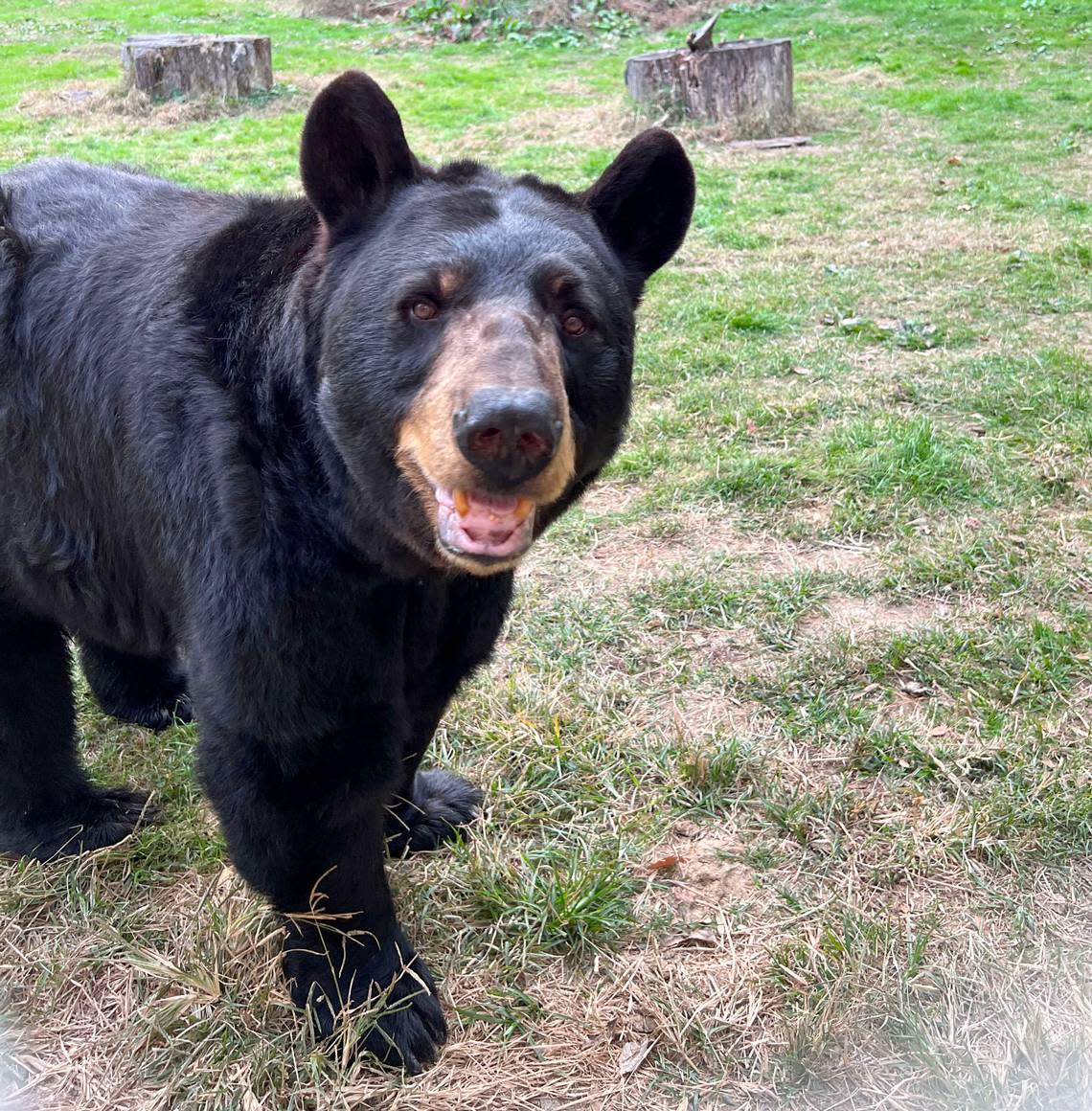Death of Mama Gus the bear leaves ‘huge hole’ at Durham children’s museum
The Museum of Life and Science euthanized an 18-year-old black bear last week after discovering an inoperable cancerous mass, the Durham museum announced Monday.
Gus had been at the museum on West Murray Avenue since arriving as a cub in 2006.
Staff had noticed a dramatic change in his behavior, according to a news release. Veterinarians from the N.C. State University College of Veterinary Medicine discovered the mass near his heart and lungs during an examination and, based on his prognosis and age, euthanized him on Wednesday.
“Gus was one of those souls that brought people (and bears) together,” Sherry Samuels, senior director of Animal Care at the museum, said in the release. “His behavior with other bears, young and old, as well as what he did on his own, has made many of us smile, laugh, moan, roll our eyes, and just look at him in awe.”
Black bears generally live no more than 10 years in the wild, though the oldest in North Carolina was known to be 26, according to the N.C Wildlife Resources Commission.
Gus’ body and cells will be donated to cancer research organizations, to better understand and treat cancer in both humans and animals, the museum said.

Orphaned as a cub
The museum is an Association of Zoos & Aquariums-accredited facility that houses rescued black bears, lemurs, endangered red wolves, and more than 60 species of live animals.
Gus came to the museum from the Virginia Department of Game and Inland Fisheries as an orphaned 5-month-old cub after wildlife officials determined he could not be released into the wild.
Known to staff as “Mama Gus,”’ Gus raised several of the museum’s bears — Little Bear, Murray, and the late Yona —who learned typical bear behaviors from him thanks to his patient nature, the news release stated.
“While I sit with this huge hole, I also have immense gratitude,” Samuels said. “Gratitude for how Gus impacted so many so positively. Gratitude for the veterinary team who cared for Gus so quickly and thoughtfully in his last days and minutes.
“I am so appreciative that Gus will live on not just in stories told of him by people I know, but likely hundreds if not thousands of people I don’t,” she said.
About the Museum of Life and Science
The Museum of Life and Science’s 84-acre campus has a two-story science center, one of the largest butterfly conservatories on the East Coast, and landscaped outdoor exhibits. Last year, the museum celebrated its 75th anniversary.
For more about Gus and his life at the museum, check out this tribute on the museum’s blog.
